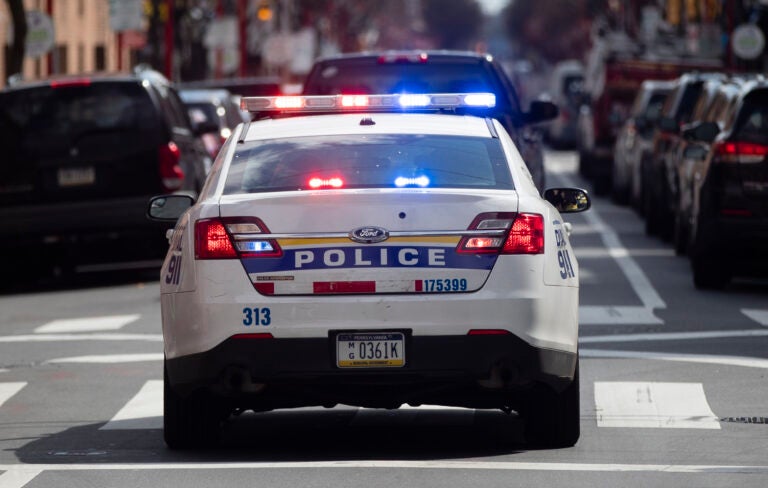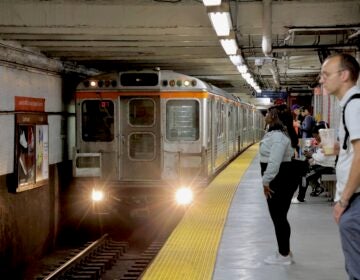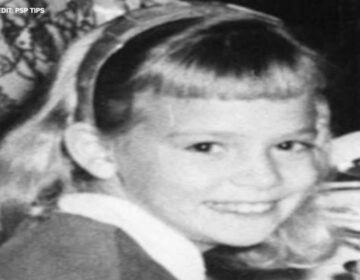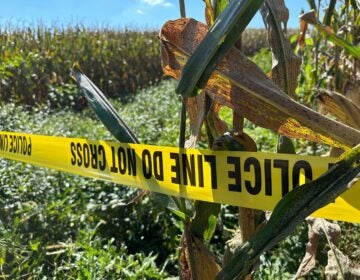Gun violence hearings leave Philly councilmembers, residents ‘disheartened’ and ‘tired’
While police brass tried to shed light on what drives the violence, Philly councilmembers and residents expressed weariness with more hearings, little action.

A Philadelphia Police Department cruiser is pictured in this file photo. (AP Photo/Matt Rourke)
Amid a significant spike in shootings and homicides, officials with Philadelphia’s Office of Violence Prevention on Wednesday got an earful from a City Council committee, whose members accused the agency of being unprepared and lacking urgency.
During the second day of virtual emergency hearings called to address the rising gun violence, lawmakers spent more than an hour pressing leadership about the office’s $9.4 million budget, the outcomes of its anti-violence programming, and the metrics it uses to determine success.
They weren’t happy with the responses they got.
“I just really feel disheartened by the lack of information provided today,” said City Councilmember Cindy Bass.
The tongue-lashing began following testimony about the city’s newly-launched Group Violence Intervention program. The new effort targets residents most likely to pull the trigger or be shot, using a combination of social services and traditional law enforcement with hopes of quelling the violence.
Theron Pride, Senior Director of Violence Prevention and Programs, told the committee the city is still in the process of hiring a case manager and an independent evaluator for the program. An advisory committee and a plan to offer transitional jobs to participants are also still in the works, he said.
“It just seems like y’all are still working through this,” said City Councilmember Kenyatta Johnson, who chairs the committee. “For me, I would be thinking that there would be a level of urgency.”
In response, Pride noted the city has an existing “menu” of support services available, and that his office is having ongoing discussions with the agencies responsible for providing them.
The coronavirus pandemic also stalled the hiring process for the program, he added.
“This is not at the pace that we wanted it. We’re doing what we can to adjust,” said Pride.
Residents and community leaders who testified on Wednesday shared a broader frustration over the surge in gun violence, which has claimed the lives of 260 residents so far this year — more than the total number of murders recorded in all of 2013 and 2014 — devastating families and communities.
As of August 9, the last date for which data is available, 1,139 residents have been shot, including more than 100 children. At the same time last year, the total stood at 837.
Wilfredo Rojas’ son, Alejandro Rojas-Garcia, was murdered in 2015 after a night out with friends. A stranger he had an argument with shot up his SUV as Rojas-Garcia drove away from a club.
He was 34 years old.
“I’m tired of the hearings. I’m tired of the meetings. I’m tired of the rallies. We have to start acting because right now, this is not a crisis. This is a war,” said Rojas. “This is a war of the citizens of Philadelphia against a small minority of people that are the ones that are perpetrating the murders and the shootings.”
“We don’t need to study this anymore. We know what’s going on,” added Davon Gaskins, a paralegal with the Philadelphia District Attorney’s Office.
Police attribute the rise in gun violence to existing rivalries between gangs and other groups, continued competition over drug turf, and “beefs” between people with “poor conflict-resolution.”
The department has said the coronavirus pandemic has played a part as well. Fewer people on the street has meant fewer eyewitnesses, potentially emboldening those responsible for the shootings. Members of warring groups have also been more likely to “encounter each other without obstruction or impediment,” according to a spokesman.
While testifying on Tuesday, Police Commissioner Danielle Outlaw added that some of the recent gun violence has ties to the use of counterfeit currency. Staff Inspector Sekou Kinebrew said the U.S. Secret Service is reviewing that aspect of those cases, but declined to provide more details.
Outlaw also told the committee that COVID-19, as well as the string of demonstrations that followed the police killing of George Floyd in Minneapolis, hampered the department’s ability to fight crime, especially drug-related cases, which she said contributed to increased gun violence in areas of the city notorious for narcotics trafficking.
“We had to reassign plainclothes narcotics officers to uniform duties and we also saw in between all of this that … for a short period of time … we had to redeploy our officers to address the civil unrest,” she said.
City Councilmember Helen Gym found part of the commissioner’s explanation problematic.
“The police department has had a really strong division that has traditionally dealt with First Amendment protests and that is Civil Affairs. And my hope is that here, as we approach the middle of August, we are not seeing demonstrations as requiring a full-fledged police response that pulls [police officers] away from neighborhoods,” said Gym.
Under a strategic plan released earlier this year, district police commanders are developing quarterly crime plans focused on violent crime “hot spots.” Officials hope these plans will make crime-fighting more tailored and nimble.
The department has also started having weekly meetings to review shootings in the city with local, state, and federal law enforcement partners. Those meetings are meant to inform district-level priorities week-to-week, including staffing and deployment of resources for violence reduction strategies.

Get daily updates from WHYY News!
WHYY is your source for fact-based, in-depth journalism and information. As a nonprofit organization, we rely on financial support from readers like you. Please give today.





